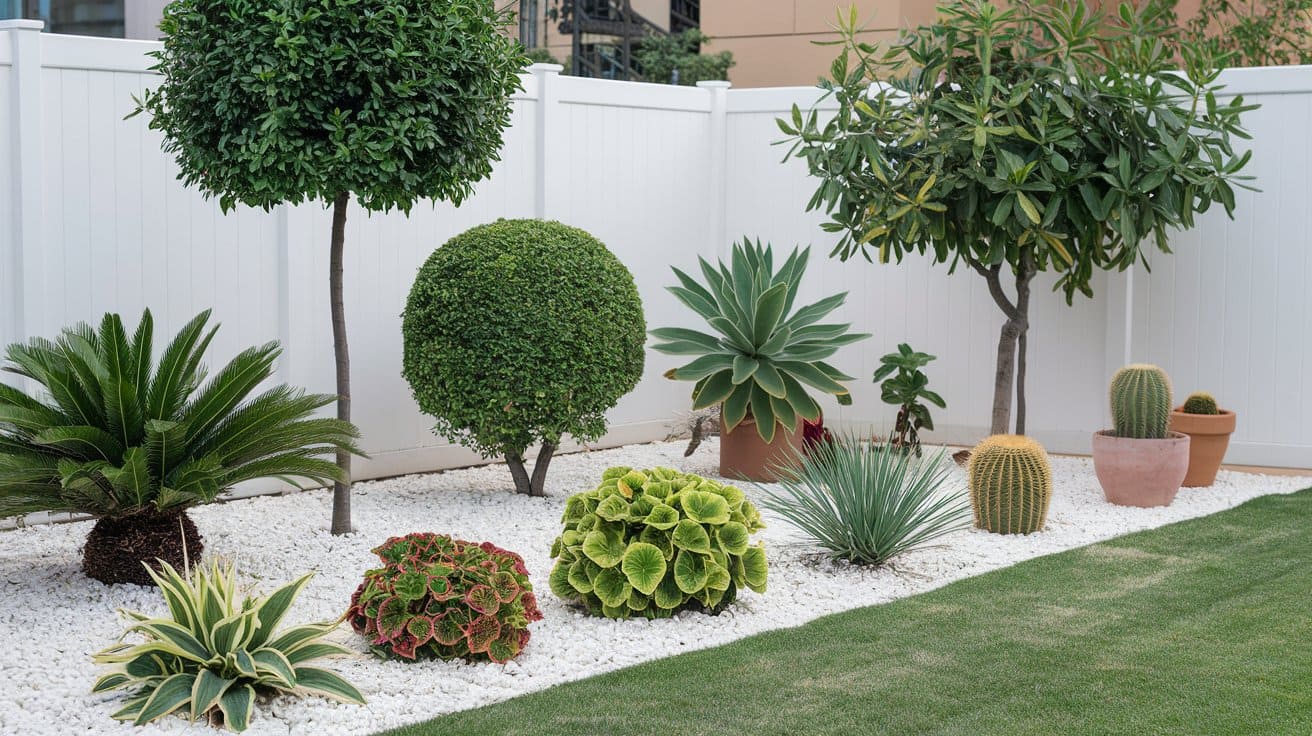Types of Plants for Gardens: Herbs, Shrubs, Trees, and More
Types Of Plants in house garden

The taxon plant is a great promising of species, which is a significant subsistence of all ecosystems and landscape ornaments. Knowledge of types of plants and their classification is not only costly because it makes people know the type of plants they need in their gardens or in any area they are planning to develop but also helps in the conservation of plants. In this article, we will discuss some classification types of plants according to their life span and growth forms, and believe it will help people get to know your green friends better.
What are the Foundations or Criteria for Classifying Plant categories?
The primary literature denotes foundational classifications upon which plant classification is determined and established due to various plant characteristics they possess or the adaptation they have developed. Some of these criteria include: lifespan, repellent for herbivores, reproduction, deciduous or evergreen, location, climate, food source, storage organs, and light. From these classifications we gain more understanding of plants and there diversity.
Classification Based on Lifespan :
· Annuals: Annuals Plants That Complete Their Growing Cycle within One Season
Annuals are plants which complete their life cycle from seed germination, to flowering and senescing all within one year. Some of examples include marigold and petunia; both are famous due to their large and colorful corolla.
· Biennials: Vegetation that completes its life cycle over two years
Bianual plant, for instance, foxglove and hollyhock are plants that take two years to come of age. The annuals germinate in the first year of growth, producing leaves and roots; the second year the plants bloom and set seed.
· Perennials: Perennial Plants
Many flowers are long-lived plants that can blossom for several years such as lavender and peonies; in fact, they tend to grow stronger season after season. They can be either annuals, biennials, perennials or shrubs, giving permanent interest in gardens.
Classification Based on Reproductive Method :
· Flowering Plants (Angiosperms): Delivering seed and flowers are plants.
Monocotyledons And Dicotyledons Monocotyledons are a group of flowering plants that has extremely diverse and known as angiosperms, are distinguished by their flowers and seeds. They include roses, daisies and fruit bearing trees.
· Non-Flowering Plants (Gymnosperms): Flora Which do Not Bear Flowers But Seeds
Angiosperms which include pines and firs bear seeds that are not enclosed by fruits. They are generally broad leaved and will facilitate many functions in most ecosystems.
Classification Based on Leaf Retention :
· Deciduous Plants:( De Arte Folia Recidivate) Plants That Shed Their Leaves Seasonally
Most of the deciduous plants’ leaf’s are liberated in the fall so they do not have to use energy during the winter that is really not needed..
· Evergreen Plants:(Evergreen plant) List of Shrubs, Trees, and Herbs
Hollies and pines remain green all year round so they offer constant color and food and cover for animals.
Classification Based on Habitat :

· Aquatic Plants:
Water flowering plants such as lotus, water lily or cattails are plants that grow in water, fresh water or salt water and have specific importance in the aquatic habitat.
· Terrestrial Plants: Plants That Grow on Land
Tropical plants, which provide most of the familiar forms, from grasses to large trees, are adapted for growth on land.
· Epiphytes: Vines That Cling to Other Plants but do not Damage Them
Some plants like the orchids and the Bromeliad attach themselves to another plant for company, drawing their water and nutrients from the rainfall.
Classification Based on Climate Adaptation :
· Tropical Plants: Plants That Can Be Grown In Hot And Humid Temperatures
Palms belonging to the tropical climate like hibiscus and banana trees are also known to grow well where the climate is warm an humid, and the soil moist.
· Temperate Plants:Consequently plants that can grow in places with moderate to mild climate during the seasons.
Summer flowers such as the azaleas and the lilac are those that grow in regions with well defined climatic seasons with harsh winters and hot summers.
· Xerophytes: Directed serving of plants that have been categorized as xerophytic in their environments where water rationing is characterized as a way of life or Hobby gardening of the Californian desert agricultural species.
Plants which are called xerophytes for instance, cacti, and succulents are plants that have well-adapted to dry conditions, and part of which contain stored water.
· Halophytes: List of Plants That Tolerate Saline Soils
Most of such species are salt-adapted plants such as saltbush and Mangrove trees, which serve important roles in our coastlines.
Classification Based on Nutritional Needs :
· Carnivorous Plants: Plants That Eat Bugs
A pitchlike plant or the Venus flytrap, for example, feeds on insects and other small animals instead of sucking fluids from the ground, as do other plants, typically, in soil disadvantaged from nutrients.
· Parasitic Plants: Plants That Draw Nutrients from Other Living Plants
Semi-parasites; these plants feed from other plants, for example, mistletoes and dodder through some degree of harm to the host plant.
Classification Based on Underground Storage Organs :
· Bulbous Plants: Some of the plants that store nutrients in bulbs include; snow drops or Galanthus, daffodil or Narcissus.
Hexametric plants are plants such as the tulip or the onion, such plants grow a bulb below the ground from which he or she draws strength for survival through other harsh conditions.
· Rhizomatous Plants: Tube Like Structures Preferred for Storage of Nutrients in Plants
Examples of stem which are subterranean and also used for storage and vegetative propagation include ginger and bamboo amongst others.
· Tuberous Plants: Kind of vegetative plant, which reserves nutrients in the formation called tubers.
Some of the plants are tuberous plants for instance potato and sweet potatoes that store energy in tubers in order to survive some seasons.
Classification Based on Light Requirements :
· Full Sun Plants: So here are some plants which are actually classified to be sun lovers:
Annual plants that require sun include; sunflowers and zinnias which grow and blossom in areas that receive full sunlight during the day.
· Partial Shade Plants: Some plants however, can grow under filtered or partial light Some of the plants include:
Low light plants, including begonias and most varieties of hostas and ferns, are plants which require less direct sunlight exposure.
· Shade-Loving Plants: Low Light indoor Plants
Herbs like the violets and some ferns are best grown in areas that receive low light, and thus the plants will do well in the shady garden.
The Most Popular Classification of Houseplants: Classification Based on Growth Form :

· Herbs: Soft, Non-Woody Plants
Herbs are often small, perennial or annual, plants that are ornamental as well as used in preparing food or medicine such as basil and mint plants.
· Shrubs: Medium-Sized, Woody Plants
It is a type of plant that is more extended than herbaceous plants but smaller than trees; it gives form to gardens. Some examples include; Boxwoods, hydrangeas.
· Trees: Largest Trees with a Trunk️
It is an enlarged shrub with a truck and branches that are known to provide shade and improve the aesthetic view of any compound. Examples include oak and maple but you might also come across dicksoniaanthracitum, welwitschia mirabilis, leptocylishirsuta, dracaena, dwari, ficuscarica and so on.
· Climbers: In this practice, plants need support to be provided by whatever available to offer the support to the plant.
Vines, including ivy and morning glory, rely on the structures in Order to grow, in an upward manner.
· Creepers: Low Shrubs That Grow Flat On The Soil
These type of plants crawl on the ground like creeping thyme and moss but are normally used where the ground is covered.
The Importance of Choosing the Right Type of Plant for Your Garden
Choosing the right species for your plants is very important to get a remarkable outcome of your landscape. Depending on the climate, light intensity, and type of soil to deal with in your compound, it is advisable to plant types of plants that will survive the conditions. Knowledge of the various types of plants’ classifications can guide people in coming up with a better approach towards planting, something that will positively affect the ecology as well as making gardens or any open space much more lovely.
In conclusion, there is a great world of plants full of divided classes which indicate different characteristics and possibilities of the plants. This is especially important whether you are a first-time gardening or have a long experience because it helps you to identify the types of plants that will produce healthy plants for your garden the bring joy and life to your surroundings. Happy planting!

